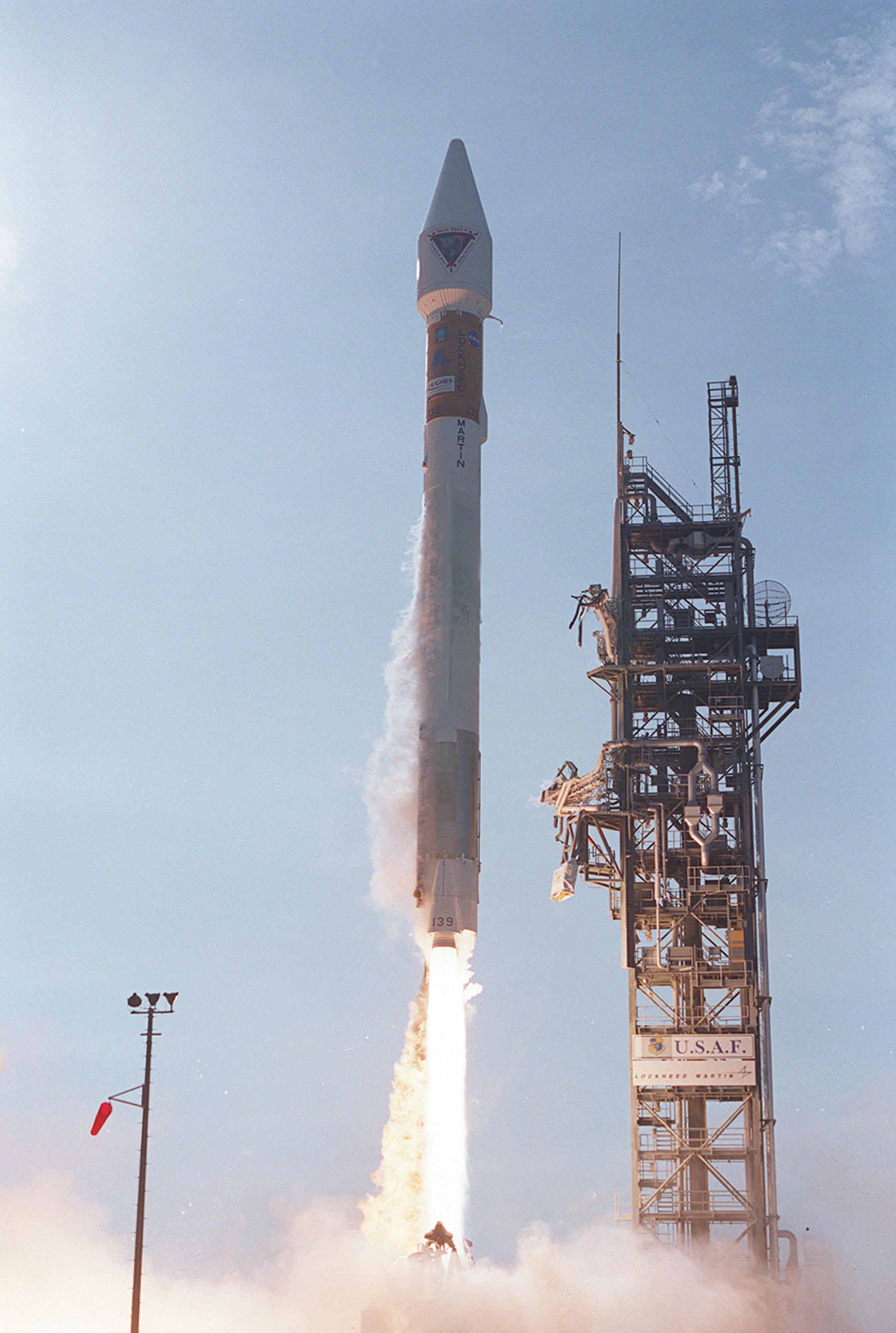TDRS-8 on:
[Wikipedia]
[Google]
[Amazon]
TDRS-8, known before launch as TDRS-H, is an American
 Its launch was contracted by
Its launch was contracted by


communications satellite
A communications satellite is an artificial satellite that relays and amplifies radio telecommunication signals via a transponder; it creates a communication channel between a source transmitter and a receiver at different locations on Earth. C ...
, of second generation, which is operated by NASA
The National Aeronautics and Space Administration (NASA ) is an independent agency of the US federal government responsible for the civil space program, aeronautics research, and space research.
NASA was established in 1958, succeeding t ...
as part of the Tracking and Data Relay Satellite System
The U.S. Tracking and Data Relay Satellite System (TDRSS) is a network of American communications satellites (each called a tracking and data relay satellite, TDRS) and ground stations used by NASA for space communications. The system was desig ...
. It was constructed by Boeing
The Boeing Company () is an American multinational corporation that designs, manufactures, and sells airplanes, rotorcraft, rockets, satellites, telecommunications equipment, and missiles worldwide. The company also provides leasing and product ...
is based on the BSS-601
The Boeing 601 (sometimes referred to as the BSS-601, and previously as the HS-601) is a communications satellite bus designed in 1985 and introduced in 1987 by Hughes Space and Communications Company. The series was extremely popular in the 199 ...
satellite bus
A satellite bus (or spacecraft bus) is the main body and structural component of a satellite or spacecraft, in which the payload and all scientific instruments are held.
Bus-derived satellites are opposed to specially produced satellites. Bus-d ...
.
Launch
 Its launch was contracted by
Its launch was contracted by International Launch Services
International Launch Services, Inc. (ILS) is a joint venture with exclusive rights to the worldwide sale of commercial Angara and Proton rocket launch services. Proton launches take place at the Baikonur Cosmodrome in Kazakhstan while Angara is l ...
, using an Atlas II
Atlas II was a member of the Atlas family of launch vehicles, which evolved from the successful Atlas missile program of the 1950s. The Atlas II was a direct evolution of the Atlas I, featuring longer first stage tanks, higher-performing engine ...
A launch vehicle
A launch vehicle or carrier rocket is a rocket designed to carry a payload (spacecraft or satellites) from the Earth's surface to outer space. Most launch vehicles operate from a launch pad, launch pads, supported by a missile launch contro ...
. The launch occurred on 30 June 2000, at 12:56:00 UTC from Launch Complex 36A at the Cape Canaveral Air Force Station
Cape Canaveral Space Force Station (CCSFS) is an installation of the United States Space Force's Space Launch Delta 45, located on Cape Canaveral in Brevard County, Florida.
Headquartered at the nearby Patrick Space Force Base, the statio ...
.
It was the first Tracking and Data Relay Satellite
A tracking and data relay satellite (TDRS) is a type of communications satellite that forms part of the Tracking and Data Relay Satellite System (TDRSS) used by NASA and other United States government agencies for communications to and fro ...
, of second generation, to be launched. Due to a malfunction of the multiple-access phased array antenna the spacecraft did not provide the expected level of performance for eighteen of the communications services that it was to provide. The same problem was found and corrected on the TDRS-9 and TDRS-10 satellites prior to their launches.
Orbit
Following its launch, it raised itself intogeostationary orbit
A geostationary orbit, also referred to as a geosynchronous equatorial orbit''Geostationary orbit'' and ''Geosynchronous (equatorial) orbit'' are used somewhat interchangeably in sources. (GEO), is a circular geosynchronous orbit in altitud ...
by means of its onboard R-4D
The R-4D is a small hypergolic rocket engine, originally designed by Marquardt Corporation for use as a reaction control system thruster on vehicles of the Apollo crewed Moon landing program. Today, Aerojet Rocketdyne manufactures and markets m ...
apogee motor
An apogee kick motor (AKM) is a rocket motor that is regularly employed on artificial satellites to provide the final impulse to change the trajectory from the transfer orbit into its final (most commonly circular) orbit. For a satellite laun ...
, and was positioned at 150.0° West for on-orbit testing. After testing was complete, it was moved to 171.0° West from where it provides communications services to spacecraft in Earth orbit, including the Space Shuttle
The Space Shuttle is a retired, partially reusable low Earth orbital spacecraft system operated from 1981 to 2011 by the U.S. National Aeronautics and Space Administration (NASA) as part of the Space Shuttle program. Its official program na ...
and International Space Station
The International Space Station (ISS) is the largest modular space station currently in low Earth orbit. It is a multinational collaborative project involving five participating space agencies: NASA (United States), Roscosmos (Russia), JAXA ...
.

See also
*2000 in spaceflight
This article outlines notable events occurring in 2000 in spaceflight, including major launches and Extravehicular activity, EVAs.
Launches
, colspan=8,
January
, -
, colspan=8,
February
, -
, colspan=8,
March
, -
...
* List of TDRS satellites
This is a list of Tracking and Data Relay Satellites. TDRS spacecraft are all in geostationary orbit and are operated by the United States National Aeronautics and Space Administration, and are used for communication between NASA facilities and ...
External links
* * * * Communications satellites in geostationary orbit Satellites using the BSS-601 bus Spacecraft launched in 2000 TDRS satellites Spacecraft launched by Atlas rockets {{US-spacecraft-stub